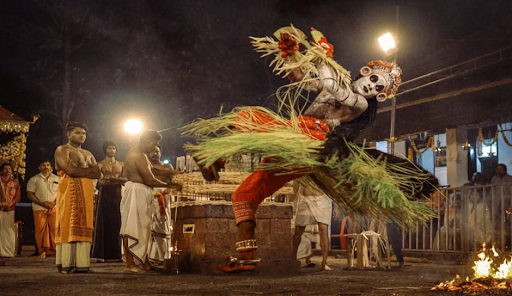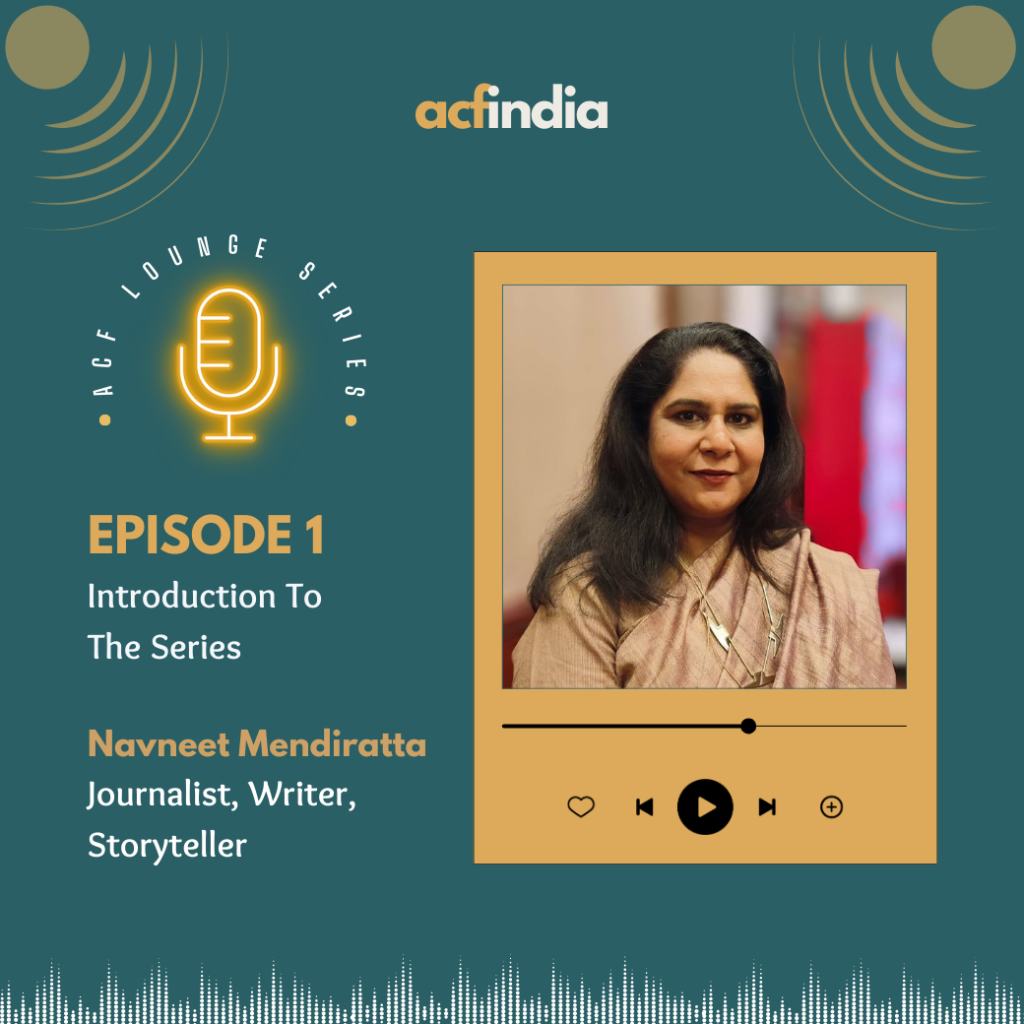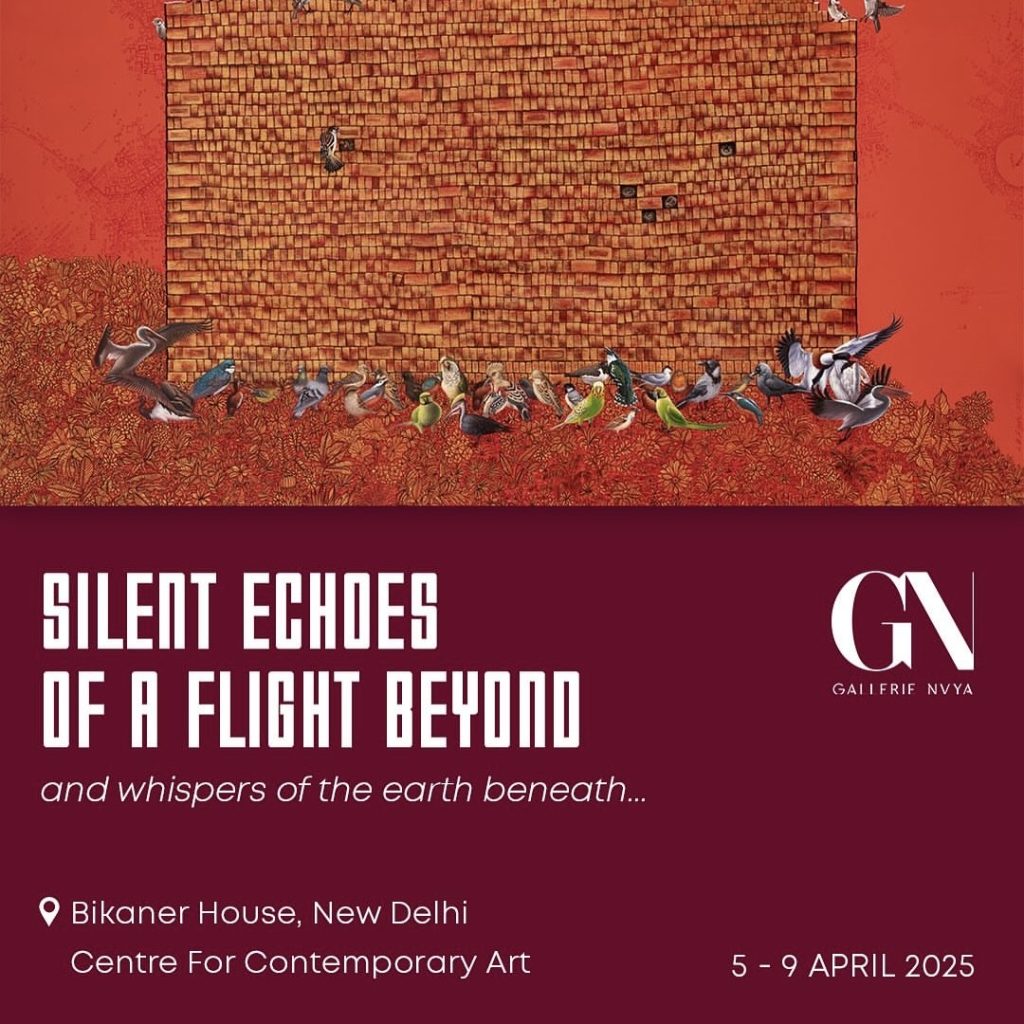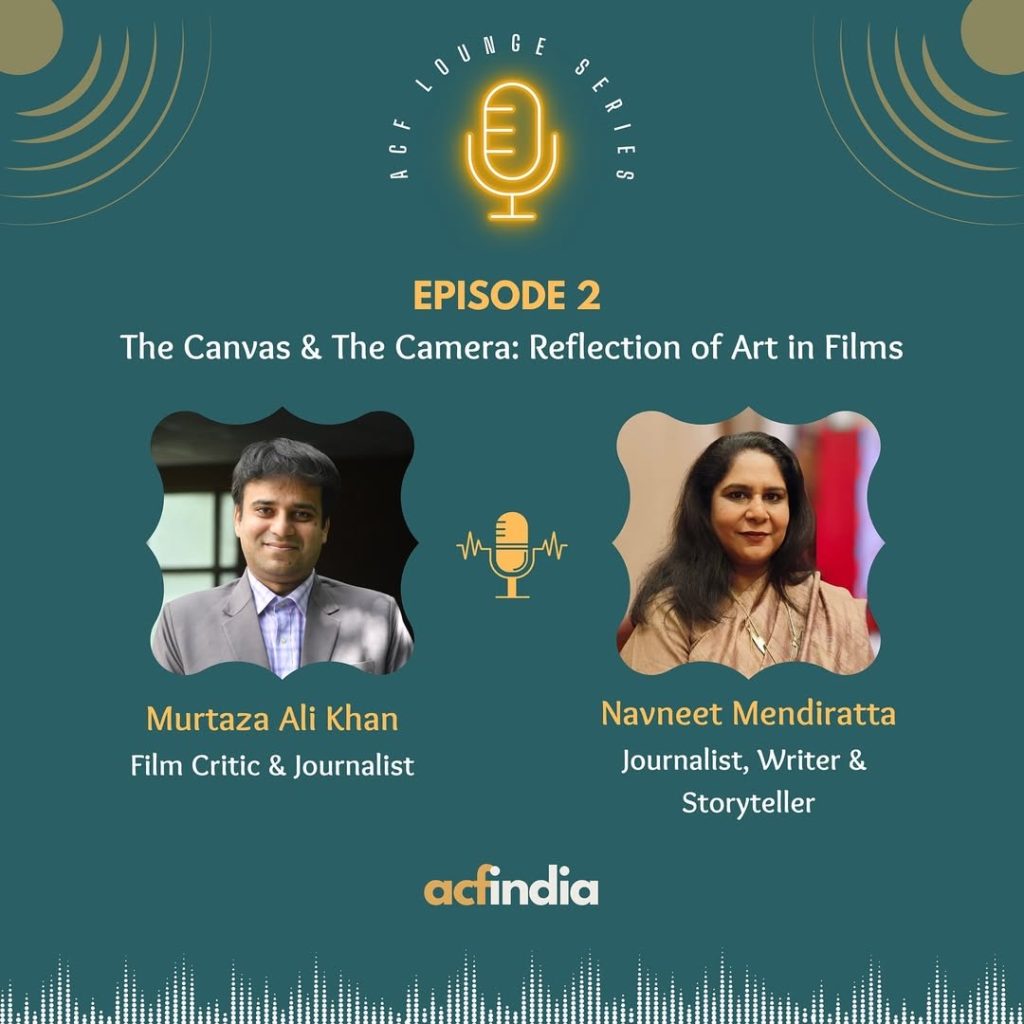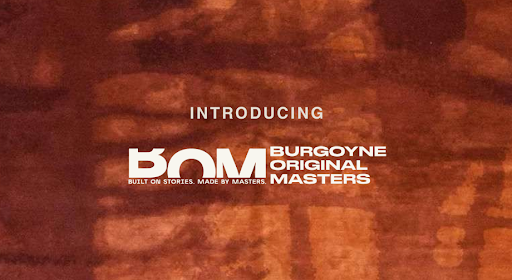By Bhavya Balamurali
Hidden in the blends of India’s cultural history is an art form that predates Hinduism. Believed to have been devised by the sixth incarnation of Lord Vishnu, Parasurama. The art form tells the story of resistance and divinity. As we explore the ritualistic art theatre from around India, Theyyam from the northern stretch of Kerala holds utmost importance.
Theyyam – a ritualistic theatre in which God emerges from the shadows, meticulously draped in a red garment and face etched in sacred design. They walk amongst you. It’s a performance where every movement, drumbeat, and chant serves the purpose of breaking the barrier between divinity and humanity.
The Ritual that Takes you Back in Time
Performed annually between the ‘Thulam’ and ‘Edavam’ of the Malayalam calendar, which falls between mid-October and early June, Theyyam is widely practiced in the Northern Malabar region of Kerala. Having its roots in ancient practices like ‘Kaliyattam’, the practice of Theyyam is entrusted with the Indigenous community.
“Theyyam has always been a part of my life” says Akhilesh Paniker, a seasoned performer from Anchampeedika, Kannur, whose bond with this ancient ritual art form was forged in childhood. “I grew up watching my father and other male members of the family performing and I have been a part of it since I was fifteen, and what I have understood is that, it isn’t just a performance nor something you can inherit by birth, but something you can only practice if you feel it deep within your spirit”.
Image Credit: Akhilesh Paniker/Instagram
As an art form that has been passed down through generations, each member of the community plays a specific role. Performers, before becoming vessels of divinity, practice abstinence, solitude, and silent prayers not to merely portray a god but to make his presence felt among the devotees and to pass judgment, blessings, and truths.
He explains how Theyyam is not merely a demonstration of technical prowess in dance, music or rhythm. It’s a sacred act of transformation, it demands far more than learned skills. One must have the will to follow through, to improvise in the moment. “When you stand there in the elaborate costume and face paint, they don’t see you anymore- they see the God you embody” he explains.
It is an act of extreme emotional and spiritual intensity and performers view it with a quiet reverence. It’s not about memorizing mantras or legends, it’s about preparing your body, mind and soul. “I prepare myself before the performance. I practice fasting, abstinence and seclusion- these aren’t customs that you practice casually but essential acts of purification. Only when you empty yourself of worldly distraction can you fully submit to the deity you are about to become”.
Image Credit: Akhilesh Paniker/Instagram
When asked about the experience of embodying God, Akhilesh explained how it’s not something measurable. “At that moment, you aren’t yourself. You face both positive and negative energies – the emotions, prayers, fears and hopes of people around you. You need absolute control over your mind to channel that divinity and reflect onto people who come seeking blessing, answers or solace”
Akilesh performs several forms of Theyyam including Theechamundi and Gulikan. Theechamundi is an offering to Lord Vishnu’s incarnation Narasimhavaratha. It involves the performer plunging into the bonfire and coming out safely and the performance of Gulikan is intense and full of rage.
Perhaps in his description of his Theyyam experience and how a mere human being is able to embody God he explains how it is achieved through Theyyam’s trance-like state. “I’m a human who feels pain, who would have a reaction if I come in contact with fire in my everyday life but when I perform Theechamundi, I leap into the hot burning amber, sometimes face first, again and again. But at that moment, I don’t feel any pain or fear and come out unharmed. It’s not a stunt, but a surrender of your mind and body and at that moment I feel God”.
For Akhilesh, every Theyyam performance is a sacred commitment towards his community. It’s a practice he conducts with utmost discipline, respect and devotion. He explains how the sacred performance starts before the drum plays or the torches are lit. It starts months prior, along with spiritual practices, the Theyyam artist makes their costumes from scratch. “We make our own costumes and ornaments. You can’t buy them from a shop” Akhilesh says, adding “It’s an expensive affair, but a part of our duty. The material, the time, the skill- it all comes from us”.
Theyyam is not about a grand stage or ticketed crowd, but it’s a visceral experience that unfolds in Kerala’s sacred groves and temple courtyard, which takes you back in time and acts as a living, breathing testament to Kerala’s past. At the end of the day, it’s a divine experience and one needs to fully train their mind to be fully committed to the sacred law. All this determines how the performance unfolds and how it would affect the performer afterward.
Image Credit: Akhilesh Paniker/ Instagram
Theyyam evolved into a visual experience that holds onto the value of the traditional practice of oral storytelling of myths and memories. In a land that was divided by cast rigidity, Theyyam made the same individual who faced oppression into Gods, who could scream and howl against injustice and talk with the authority of god.
When asked if he sees the art reaching greater recognition he answered with a mix of sadness and defiance. “It’s an art at the brink of extinction, there are real risks involved. We jump through fire, handle blades and endure physical strain. Many retire by the age of forty because of the toll it takes on their bodies. And since it is mostly not recognized like other traditional artforms, the artist does not get much allowance in order to practice this art as a profession. And the younger generation isn’t interested and I can’t blame them as it’s a path filled with uncertainty”.
Image Credit: Akhilesh Panicker/ Instagram
Akhilesh had such deep insight on the topic as he is intertwined with the art. For him, Theyyam is beyond spirituality; it’s a vital thread in the cultural and ecological fabric of Kerala. “The sacred groves or the ‘Kavu’ where Theyyam is performed, were originally created to protect the forest. The ritual wasn’t just for worship, it was a way of sustaining our connection with nature and to conserve its sanctity. It’s an integral part of Dravidian culture and should never be forgotten”.
He makes us understand that, in a world that quickly labels traditions as relics, some rituals remain because they answer a need that modern life can never. Theyyam expand on our sacred calling and the need to believe, to submit, and to feel the presence of something beyond our comprehension.
Without big spotlights or a booming sound system, Theyyam stands apart in the spectrum of Indian artforms. It’s a lived experience, created effortlessly through elements that would connect with every spectacle present to witness, while it breathes life into the forgotten legends.
With efforts from the Ministry of Kerala Tourism, the artform is preserved and promoted. With more than four hundred forms of Theyyam coming to life each year in Kerala, it is an experience that every seeker of culture and mistiness must experience. It is something one would carry a long way in life.


